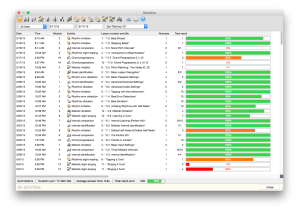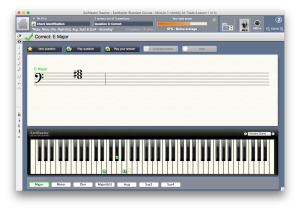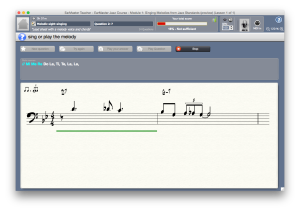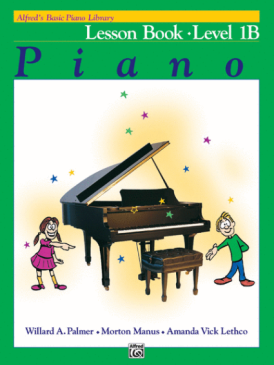Guest Post:
Most of you know that ear training is essential to acquiring better musical skills. After all, our aural aptitudes are what guide our hands when we perform a piece. To get a better ear, we need regular practice in order to keep it in shape – exactly like we would with our piano playing skills. With the technology available today, such practice has become easier and more accessible than ever. When searching for ear training software, you will find plenty of options. The EarMaster program seems quite popular, so I gave it a try.
EarMaster Pro 6 offers a little over 2000 lessons for ear training, sight-singing and rhythm practice, and caters for most skill levels. It contains a general-purpose course covering intervals, chords, chord inversions, harmonic progressions, scales, dictations, sing-back and clap-back activities, as well as sight-singing. You will also find a Jazz-oriented course which focuses on Jazz chords and swing rhythms. Exercises are answered in various ways: by using an on-screen piano keyboard, by singing and clapping into a microphone, by writing notes onto a notation staff, or even by playing on a MIDI keyboard.
The exercises follow a step-by-step progression that guides the user through sequences of lessons grouped by theme. Every exercise is also customizable, which gives us the opportunity to practice specific areas outside of the main courses. We noticed that the software analyzed the answers we gave in real-time and adapted the content of the lessons and the number of questions to our performance, which is quite useful.
The included sight-singing and sing-back exercises are setting EarMaster apart from other titles dedicated to ear training. These exercises are for both melodic and rhythmic training, and allow you to play along a score or to sing and clap short excerpts of music from memory. As with the other exercises included in the software, you are starting off at a low difficulty level, and then move on to more complex melodic and rhythmic phrases. The software also offers a Music XML import feature, which enables you to do sight-singing or melody sing-back sessions with a 4-part chorales or Jazz standards for examples. There are many websites from which you can download royalty-free Music XML material, so the possibilities are almost limitless.
According to the website of the developer, an iPad version of EarMaster should be on its way, but no release date other than “in 2015” seems to be available yet.
You will find a free 7-day trial version at www.earmaster.com.
Happy ear training!
_________________________________________________________________
Browse More Music Theory Posts:
Flash Frog™ | Music Flash Cards for Beginners
Pirate Quest | Music Terms Board Game (Digital Print)
Carnegie Hall Park (Matchbox Parking) | Music Theory Board Game





You must be logged in to post a comment.